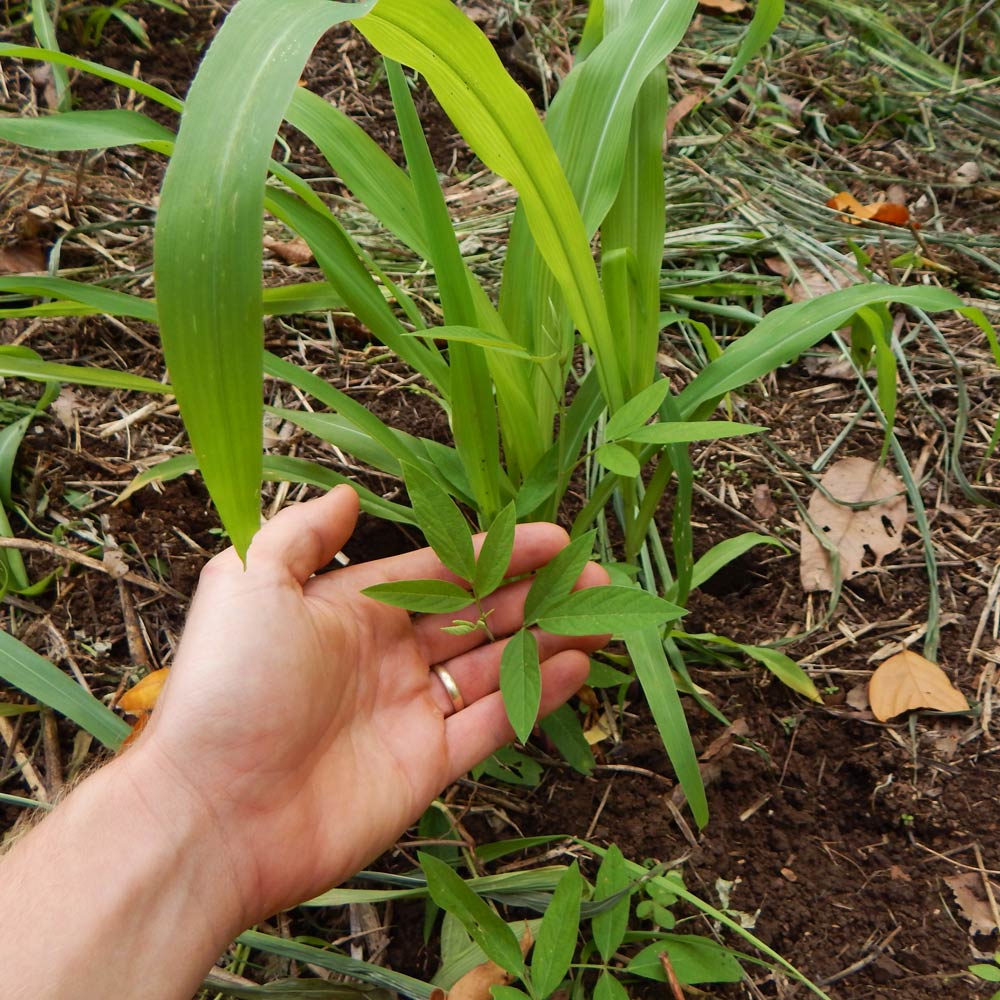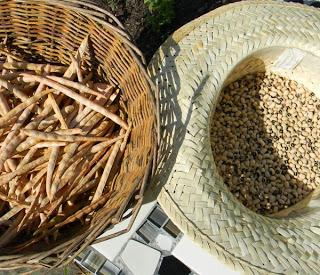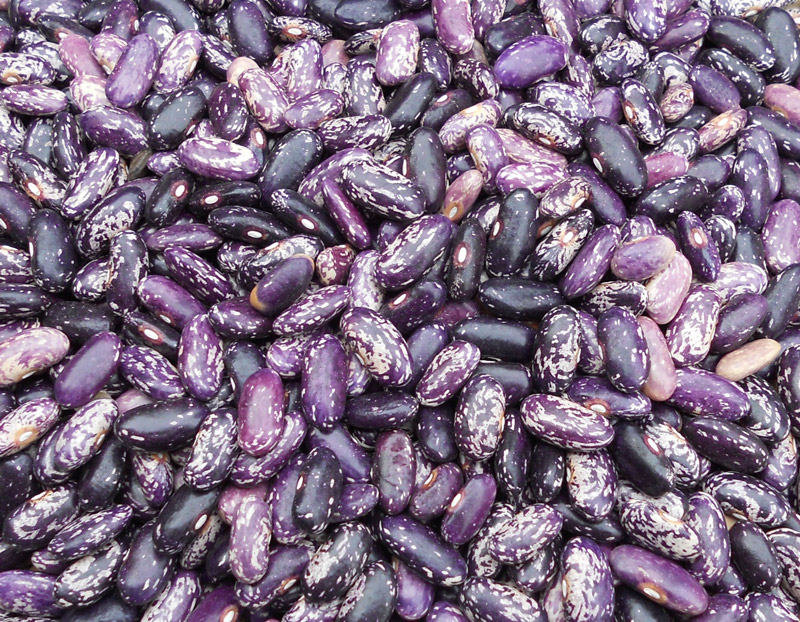A pastor from Haiti asks about dry bean varieties for the tropics:
“Recently, I was contacted by a small group of farmers who have secured acres of ground in Haiti and are diligently working to produce a variety of crops – utilizing a cooperative of Haitian farmers and growers to produce Plantain and Peanuts.
The pastor further informed me that they are looking for dry bean varieties, not green beans. Think storable protein.
Pigeon Peas

I recommended pigeon peas and he wrote further:
“I have been reading about the pigeon peas and ordered the seed today to arrive in time to take with me.”
So that’s good – pigeon peas can take a lot of heat and humidity and produce crops for at least two years, provided wind damage doesn’t take them down.
Southern Peas
Another thought I had was the classic “black-eyed pea” or “zipper peas,” also called “crowder peas,” “cow peas” and “Southern peas.”
Their Latin name is Vigna unguiculata.
They take heat, poor soil, humidity and low rainfall and still produce crops.

We had great success with them in dry and wet conditions and high heat.
Baker Creek Heirloom Seeds has quite a few varieties for sale.
Kebarika Bean
There is also the Kebarika bean from Kenya that’s available from Southern Exposure Seed Exchange.

We grew those in a hot and rainy summer in Florida and they were one of the few bean plants that produced dry beans for us.
The flavor is bland but the plants were strong.
LabLab
The pastor mentioned lablab (Lablab purpureus) in one of his emails – that could be another good option, though I have not grown them much myself.
Via Tropical Forages:
“Lablab is a dual-purpose legume. It is traditionally grown as a pulse crop for human consumption in south and southeast Asia and eastern Africa. Flowers and immature pods also used as a vegetable. It is also used as a fodder legume sown for grazing and conservation in broad-acre agricultural systems in tropical environments with a summer rainfall. Also used as green manure, cover crop and in cut-and-carry systems and as a concentrate feed. It can be incorporated into cereal cropping systems as a legume ley to address soil fertility decline and is used as an intercrop species with maize to provide better legume/stover feed quality. As a dual purpose (human food and animal feed) legume , it is sown as a monoculture or in intercrop systems.”
Worth trying.
Winged Bean
Winged beans are a Swiss Army Knife bean species. Edible leaves, green pods, roots and dry beans.
“Winged bean thrives in hot weather and favours humidity, but it is an adaptable plant. It is reported that the winged bean can adjust to the climate of the equatorial tropics.[1] Winged bean production is optimal in humidity, but the species is susceptible to moisture stress and waterlogging.”
I have heard that dry winged beans need plenty of cooking to become soft and digestible but have not tried them as dry beans myself – they are on the list of test crops for us.
Final Thoughts on Dry Bean Varieties for the Tropics
If this were my project, I would gather a wide range of bean varieties and test them all over a few years to see which did the best. Sometimes a type will work that you thought wouldn’t – or a sure-fire variety just doesn’t do well under local conditions.
Experiment, experiment, experiment. If you have bed space, definitely grab some Southern peas, lablab, winged beans, pigeon peas and Kebarika… and then spin out from there.
Pintos may do well, or some variety of Roma bean from Italy – you don’t know until you try. I pray you find great success.
If any of you brilliant readers have any further suggestions on dry bean varieties for the tropics, please let me know in the comments.
If there’s something you’ve grown that worked great in the heat and humidity, share it. Let’s help this pastor have success with his gardening experiments!
*Kebarika bean image via Southern Exposure Seed Exchange.


6 comments
Yes yes to southern Peas. They keep forever and grow under the hottest most humid conditions in poor soil as you’ve said. We call them Acre Peas or cream Peas. Zipper Peas are also good and easier to peel, but the taste of Acre is superior. So, I’ve not tried growing them yet myself, but I’ve eaten pink beans and they seem softer and may have less anti nutrients when prepared properly than pintos (based on how they soaked and cooked and how I felt after eating them, nothing scientific). http://www.camelliabrand.com/about-the-bean/about-pink-beans/
I believe they may grow in the tropics and would probably be fine to grow from the grocery store. I’ll try it and let you know. They were very delicious and preferable to pintos.
Madagascar Bean also known as 7 Year Bean grows well in the tropics…even in the wet season…and is a perennial giving you a new crop once or twice a year.
Jack Bean is unkillable and will give you a good crop in nearly any soil. It’s only drawback is the beans have to be cooked for such a huge amount of time (try boiling for 5 minutes, using heat retention cooking then boiling again for 5 minutes). If it’s not cooked properly it can be more toxic than the average hard bean.
I have some going – did not realize they were perennial. Thank you.
I love Jack Bean plants but haven’t been able to get seeds here. One day.
Jack Bean – (Canavalia ensiformis) available from Sheffield’s Seeds. https://sheffields.com/seeds-for-sale/Canavalia/ensiformis/2511/Wonderbean,-Jack-Bean,-Wonder-Bean,-Giant-Stock-Bean,-Horse-Bean,-Swordbean,-Gotani-Bean/Wonderbean,-Jack-Bean,-Wonder-Bean,-Giant-Stock-Bean,-Horse-Bean,-Swordbean,-Gotani-Bean
Hey! I live in the tropics in Australia and have found Madagascar beans (Phaseolus lunatus) to be absolutely abundant! They produce more after the first year. Must be cooked to be eaten but are delicious, buttery and fleshy.
Also, sword beans (Canavalia gladiata) can be pink/red, white or speckled. Tropical climber, perennial. Produce more in first year so I grow them as an annual. Needs a strong support- can grow 3m tall. Soak in warm water or scarifying seed to germinate. HUGE yield, HUGE bean. Definitely an under-appreciated food crop.
Pigeon pea is also very successful as the article suggests.
Making miso, tempeh, amino sauce and other fermentation processes helps extends the storage period for me, often for many years as is the case with my 7 year miso.
Hope this help and happy growing!
Kato
Comments are closed.